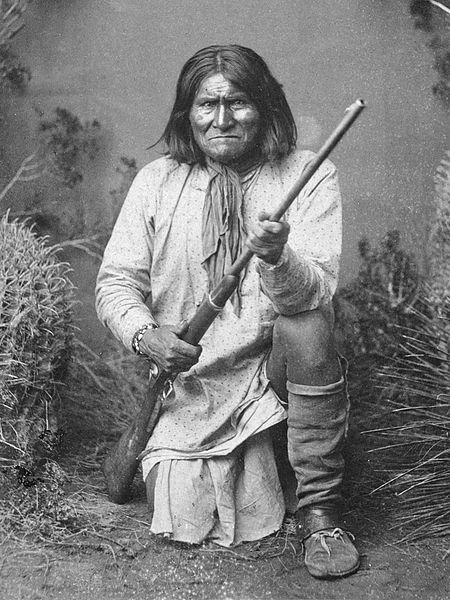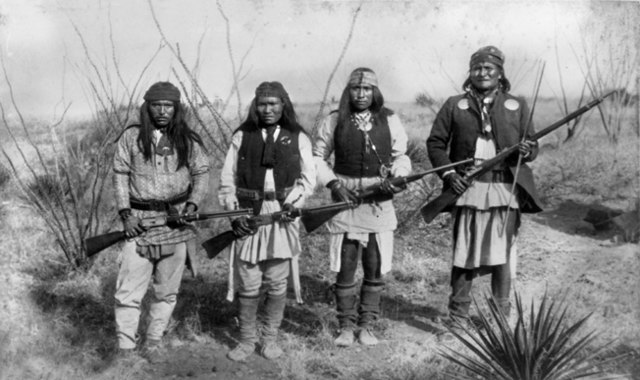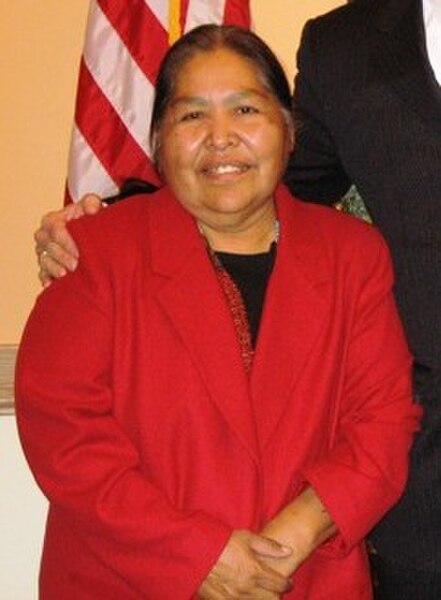Gerónimo was a military leader and medicine man from the Bedonkohe band of the Ndendahe Apache people. From 1850 to 1886, Geronimo joined with members of three other Central Apache bands – the Tchihende, the Tsokanende and the Nednhi – to carry out numerous raids, as well as fight against Mexican and U.S. military campaigns in the northern Mexico states of Chihuahua and Sonora and in the southwestern American territories of New Mexico and Arizona.
Photograph by Frank Rinehart, 1898
Geronimo (Goyaalé), a Bedonkohe Apache, kneeling with rifle, 1887
From right to left, Apache leader Geronimo, Yanozha (Geronimo's brother-in-law), Chappo (Geronimo's son by his second wife), and Fun (Yanozha's half brother) in 1886. Taken by C. S. Fly.
Photo by C. S. Fly of Geronimo and his warriors, taken before the surrender to Gen. Crook, March 27, 1886, in the Sierra Madre mountains of Mexico. Fly's photographs are the only known images of Indian combatants still in the field who had not yet surrendered to the United States.
The Apache are several Southern Athabaskan language–speaking peoples of the Southwest, the Southern Plains and Northern Mexico. They are linguistically related to the Navajo. They migrated from the Athabascan homelands in the north into the Southwest between 1000 and 1500 CE.
Kathy Kitcheyan, chairwoman of the San Carlos Apache
Essa-queta, Plains Apache chief
Young Jicarilla Apache boy, New Mexico, 2009
A Western Apache woman from the San Carlos group








